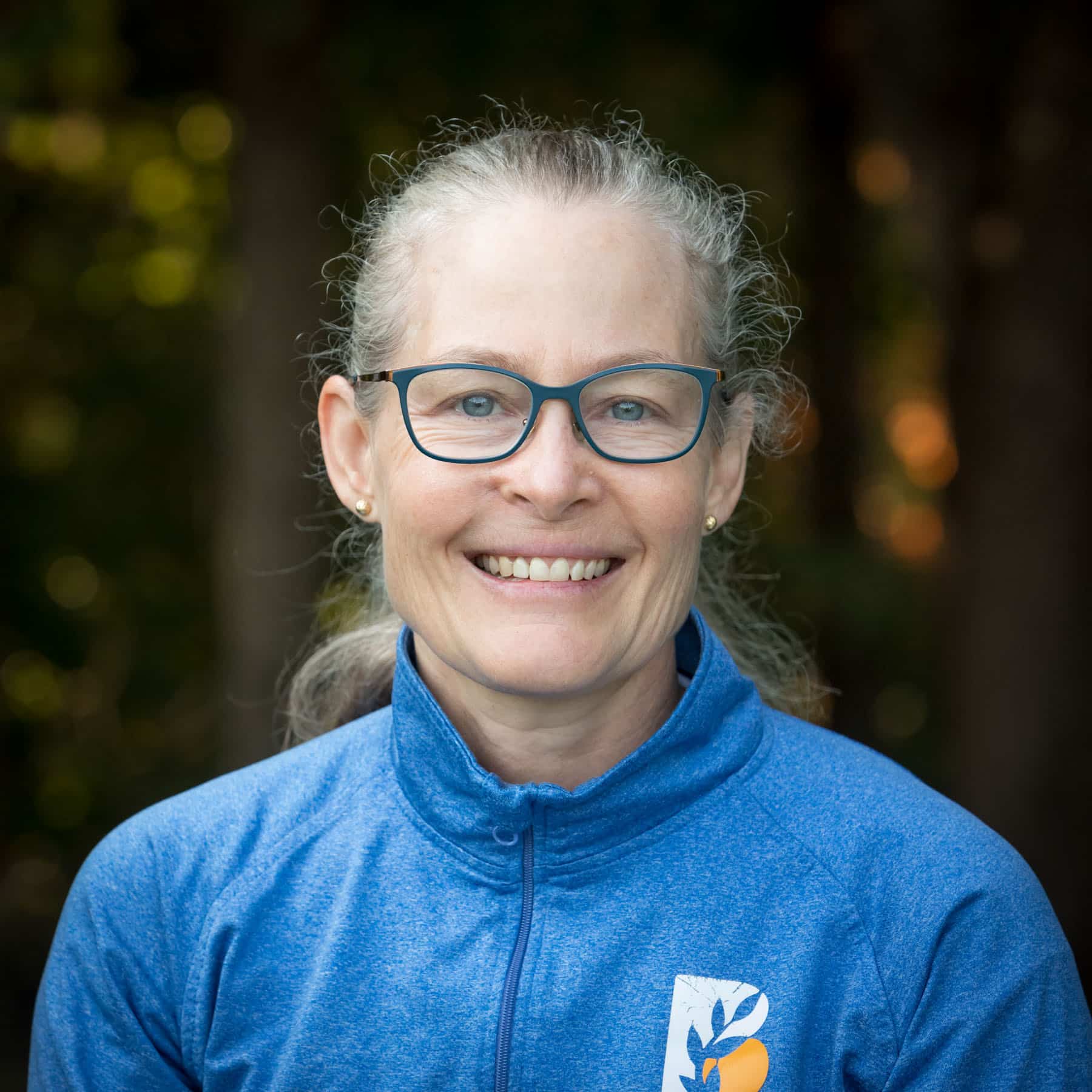7 a.m.
I arrive at BDS to the aroma of garlic and tomato wafting from the kitchen. As I walk in, the day’s menu prep is already underway. Music plays, and I check in with the team. Chef Vlad focuses on preparing the main hot meal–a complicated and physical job. It’s “Pasta Monday,” so he’s juggling homemade marinara sauce bubbling in a giant 12-gallon pot, pasta for 350 people, and countless crusty rolls ready for the oven. Out in Coolidge Hall, Ellen buzzes around, greeting and chatting with students and faculty, ensuring everyone starts their day well. She fills and refills the coffee and breakfast items as waves of faculty stop by to fuel their day. Nearby, Isabelle, quietly as always, has already delivered the snack bins and baskets for each class and is preparing the specialty salad of the day.
7:30 a.m.
The dishwasher is running, the fan is whirring, the ovens are beeping, the pans are clanging, and the kitchen team and faculty are chatting. I move to my desk at the back of the kitchen. I check when deliveries will arrive and call any vendors with whom I may need to update orders. It is quieter around my corner, but I can still hear the buzz in the heart of the kitchen.
8 a.m.
Henry arrives with a giant smile, exclaiming, “Buenas Dia!” He sets up Coolidge Hall for lunch and keeps our dishes clean. Henry makes each table look welcoming. He stocks everything and wipes down the tables. He also checks to see if the centerpieces need water. These colorful floral arrangements, generously donated by BDS families each month, add an inviting touch to every table.
9:30 a.m.
With our dining space set up, the team turns back to the menu. Together, we decide how to organize the hot bar, with popular leftovers, vegan or vegetarian options, the chef’s choice of vegetable, and the faculty’s main entree. It is essential to the team that we offer a variety of foods and items that stretch the palates of our community and provide both nourishment and comfort. The key is finding balance. How can we joyfully encourage students and faculty to explore new flavors and foods they might usually not try at home while maintaining healthy stability in their diet along the way?
Isabelle, our scribe with enviable penmanship, writes the day’s menu on the whiteboard in Coolidge Hall for all to see and savor. We include any allergen or dietary information and highlight anything we are serving harvested from the BDS Garden.
Coolidge continues its busy buzz as the refrigerated salad bar cools and the hot bar steams as it warms, waiting for the food pans to fill their wells. Even though lunch hasn’t begun, students come by to pick up protein snacks, and our team starts sorting fresh snacks for the next day, putting them into the classroom baskets. Everything is ready, and there’s a moment of calm before the rush.
11 a.m.
It is showtime. We welcome our first students into Coolidge Hall for the first of four daily lunches. The salad bar is now brimming with colorful fruits and vegetables, and the hot bar is steaming and full of tempting dishes. The entrees are on each table to be shared family-style.
I observe as much interaction as I can in Coolidge. The first graders watch the second graders try new things, prompting them to be curious about different foods. As the faculty member at each table serves the students, they remind them to say “please” and “thank you.” Ellen and Isabelle assist students at the salad bar as they navigate serving themselves. In these moments, the idea of “everyone is everyone’s teacher” comes to life for me.
During each lunch, I circulate among the tables and talk to students, asking them how they like the meal. They reply with signals of “thumbs up,” “thumbs down,” or “in the middle.” I encourage “mouse bites” and inquire about what they like most or how they might balance out their meals with fruits and vegetables by adding color to their plates.
There is a noticeable excitement in the room as the students make choices, chat with their friends, improve their motor skills by using tongs while balancing their plates on the edge of the salad bar, use their manners, and advocate for what they like to eat. The younger students improve their skills with knives and forks while learning to organize their space and manage their time. They learn how to make choices and how to fuel their bodies.
1:15 p.m.
The dining experience for the day is over in what seems like a flash. Middle school students file out of Coolidge after finishing their jobs of clearing, wiping, and sweeping. The chairs are stacked, and the space is quiet again. It is closing time, and the kitchen team begins the day’s final stage. The dishes are piled, separated, and washed, the salad bar is emptied and scrubbed clean, and the last crumbs get wiped from the tables. Cups and cutlery are restocked on the tables, and the compost is emptied. The checklist goes on as leftover hot food cools to be covered and refrigerated.
2:30 p.m.
We prepare for the following day. Music plays again on the radio, mixed with whirring and splashing as Henry runs the last dishes in the dishwasher and cleans the sinks. Ellen preps coffee for a morning event. Vlad is making a marinade and chopping vegetables. Isabelle is in Coolidge, filling the dry snack bins. I am at my desk finalizing any orders for the day, planning new menu items, making calls to vendors, signing off on invoices, checking labels for allergens, researching new food products, and answering emails. I visit one of the classrooms to discuss learning in our dining space. We talk about the “hidden menu” of being in a community and caring for ourselves, our people, and our spaces. I end my day feeling full and satisfied.

